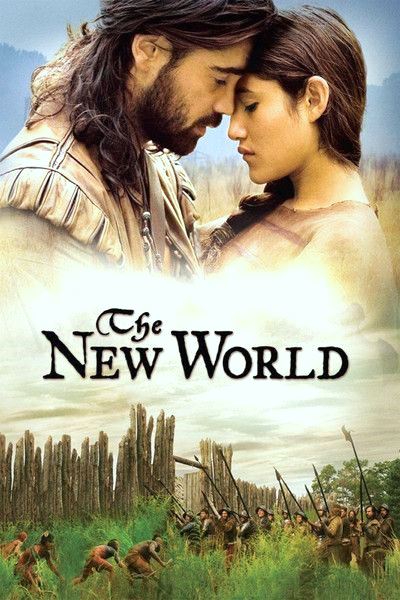
In which Terrence Malick opens up the aperture of his camera to capture exquisite rays of natural light on Jamestown circa 1607, only to give us a limited geographical sight of it all. That flustered me about The New World when I first saw it in 2005. Raw in its gorgeousness, but a little obtuse, a little sealed off, at arm’s length, with actors I did not have much ravishing affection for. Since then, I’ve become more accustomed to just submit to the Malick poetry when it is working: murmuring voiceovers, foot frolics between an amorous two, an occasional human reaction that feels like genesis, swooping camera motions over blades of grass.
Young teen first-time actress Q’orianka Kilcher does fine as the vigilant Pocahontas, whose name is virtually never mentioned. Colin Farrell has long greasy locks and virulence in his veins, but he’s among my least favorite protagonists for a Malick film even though he gets to play settler John Smith. He’s so pensive in the face, it’s pouty and mournful.
With barely a third of screen time, Christian Bale comes out too cautiously, I thought at first, but his molded English gentlemanliness as John Rolfe augments the picture nicely, especially as he pursues to win the hand of Pocahontas. It’s necessary that most of the other whites in the cast are unthoughtful brutes, whom once threatened by Indians engage hastily. Yet it is just as sage by Malick to show us the other side, the distrust of the Indians and wariness of Pocahontas father, the chief, who later disowns his daughter, as it shows the Indian tribe thought of annihilating the whites first before they would be struck.
The inevitable combative violence is haphazard and crammed in its staging, so it’s not particularly memorable violence, though it might have really been that messy.
The film occasionally forgets that there’s an actual child to care for, nonetheless, “The New World,” comes majestically alive in the final passages of the film, with the principles transplanted back to the old world royal grounds of England, and life is grand, utopia is ubiquitous, all is endlessly beautiful.
Then a great final shot looking up a tree which means more to me now; the English shall return and cross through the forests and eventually see more than the first settlers (who didn’t have the imagination in two hours and fifteen minutes of run time to go and look for themselves), and it also means it will be a tree eventually cut, then two trees, then tens of thousands, to make room for those who voyaged over and made that Indian land theirs.
I’m quite certain it is an expressive final shot by Malick. Of course, it would have been more momentous had Malick used the time all along to venture further beyond.
HISTORICAL DRAMA / ADULT ORIENTATION / AFTERNOON EYES WIDE OPEN
Film Cousins: “The Emigrants” (1972, Sweden); “Days of Heaven” (1978); “Black Robe” (1991); “Pocahontas” (1995).





